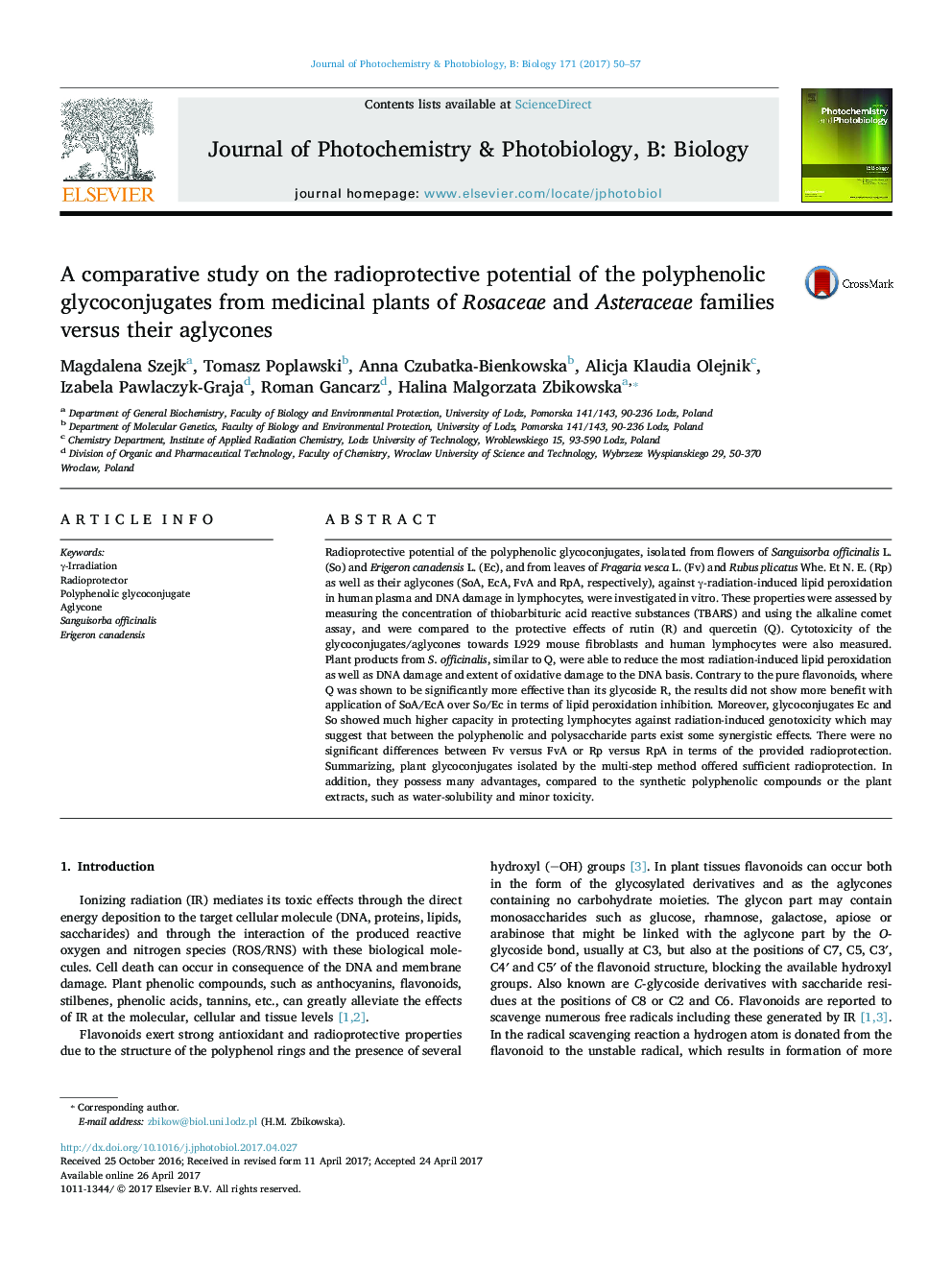| کد مقاله | کد نشریه | سال انتشار | مقاله انگلیسی | نسخه تمام متن |
|---|---|---|---|---|
| 4754443 | 1418062 | 2017 | 8 صفحه PDF | دانلود رایگان |

- Plant products from great burnet ensure high radioprotection similar to quercetin.
- Glycoconjugates more reduce radiation-induced cellular genotoxicity than aglycones.
- Polyphenolic glycoconjugates/aglycones are less toxic than quercetin.
- Synergistic effects between the phenolic and polysaccharide parts is proposed.
Radioprotective potential of the polyphenolic glycoconjugates, isolated from flowers of Sanguisorba officinalis L. (So) and Erigeron canadensis L. (Ec), and from leaves of Fragaria vesca L. (Fv) and Rubus plicatus Whe. Et N. E. (Rp) as well as their aglycones (SoA, EcA, FvA and RpA, respectively), against γ-radiation-induced lipid peroxidation in human plasma and DNA damage in lymphocytes, were investigated in vitro. These properties were assessed by measuring the concentration of thiobarbituric acid reactive substances (TBARS) and using the alkaline comet assay, and were compared to the protective effects of rutin (R) and quercetin (Q). Cytotoxicity of the glycoconjugates/aglycones towards L929 mouse fibroblasts and human lymphocytes were also measured. Plant products from S. officinalis, similar to Q, were able to reduce the most radiation-induced lipid peroxidation as well as DNA damage and extent of oxidative damage to the DNA basis. Contrary to the pure flavonoids, where Q was shown to be significantly more effective than its glycoside R, the results did not show more benefit with application of SoA/EcA over So/Ec in terms of lipid peroxidation inhibition. Moreover, glycoconjugates Ec and So showed much higher capacity in protecting lymphocytes against radiation-induced genotoxicity which may suggest that between the polyphenolic and polysaccharide parts exist some synergistic effects. There were no significant differences between Fv versus FvA or Rp versus RpA in terms of the provided radioprotection. Summarizing, plant glycoconjugates isolated by the multi-step method offered sufficient radioprotection. In addition, they possess many advantages, compared to the synthetic polyphenolic compounds or the plant extracts, such as water-solubility and minor toxicity.
104
Journal: Journal of Photochemistry and Photobiology B: Biology - Volume 171, June 2017, Pages 50-57